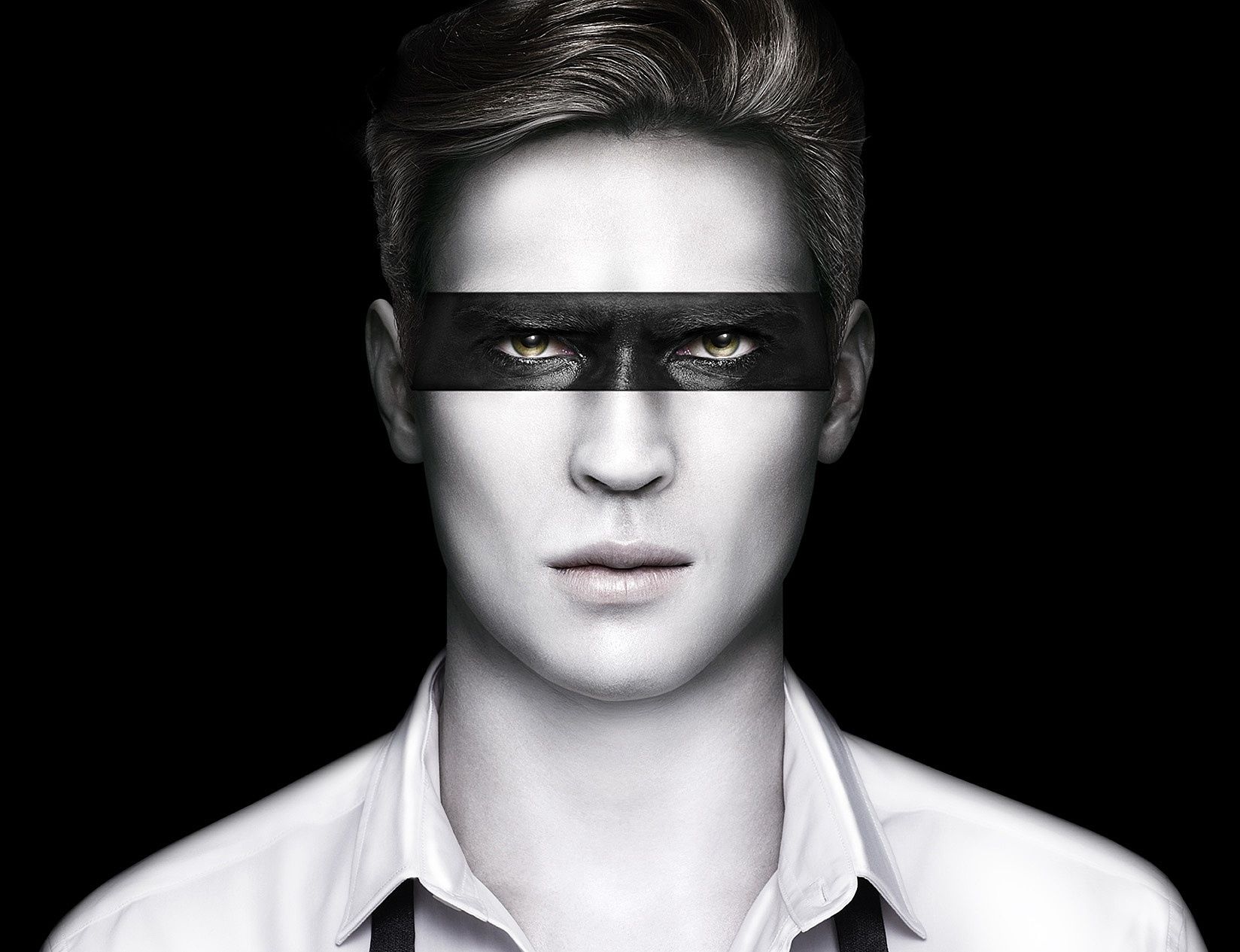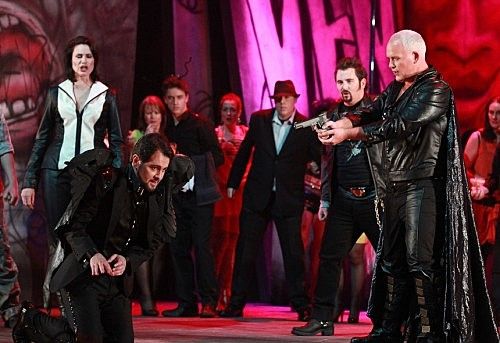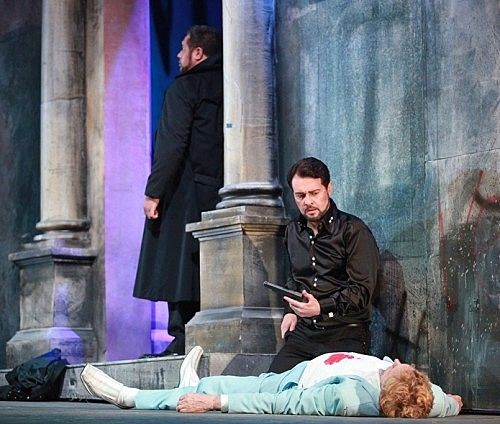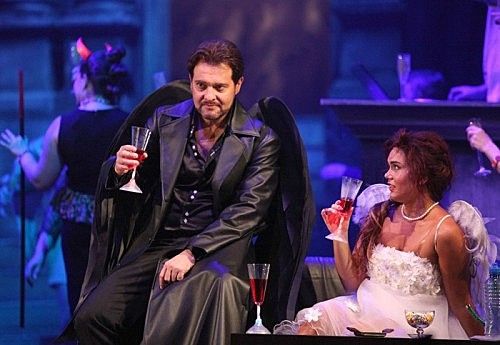Review: Don Giovanni
New Zealand Opera’s latest production of Mozart’s Don Giovanni manages to break free from some of the tired traditions that come with the form – but in other ways it’s business as usual.
Going to the opera can be an unsettling experience, the oddness stemming from taking a theatre form grounded in centuries of upper-class European tradition (with all the pomp and grandeur it entails), placing it in a modern context, and expecting people to know how to deal with the contrived milieu.
Refreshingly, New Zealand Opera’s latest production of Mozart’s Don Giovanni manages to break free from some of the tired traditions that come with the form – but in other ways it’s business as usual.
It’s easy to understand why the company might want to reinvigorate their practice – a steadily ageing audience eventually leads to a decline in patronage, and big opera is expensive to produce. With this production, they bring a healthy dose of sexiness back to the work of a man who was 18th century Europe’s equivalent of a rock star and, in doing so, move towards opening their doors to a more diverse and uninitiated audience.
Don Giovanni is the story of a psychopathic serial seducer. Based on the simpler Spanish parable of Don Juan, it eulogizes the downfall that accompanies a life of hedonism. Like many operas from this period, the narrative’s purpose is less about creating emotional connection and more about carrying the audience from song-to-song. Sara Brodie’s direction clearly acknowledges that modern audiences want more than that from their theatre, and she’s found some beautiful ways of bringing that connection out.
Grounded in the tragicomedy form of opera known as dramma giocoso, the story’s titular character (brought to greasy-yet-somehow-charming life by Mark Stone) is renowned for his very many sordid conquests. The opera revolves around the continuation of these womanising ways and the havoc consequently caused. Ultimately we see the Don get his comeuppance in a diabolical conclusion (cue one of the most unexpected and fantastic pieces of stage craft I’ve ever seen).
The story’s main conflict arises in the opening scene, when Giovanni kills the father of Donna Anna (played with bold, direct, physical energy by Lisa Harper-Brown), one of the many targets of his affection. The revenge then pledged by her fiancée, Don Ottavio (Jaewoo Kim), combined with Giovanni’s incessant philandry, provides the narrative framework.
Vocally and musically, the production is tight and dynamic. The opening chords of the overture foreshadow the incendiary conclusion of the work, and is bellowed through the auditorium with ferocious potency. From there, the music drops to a less dramatic key, and spends the next two hours rebuilding to that initial peak of energy in a way that implies a cyclicality of its narrative, as if to reinforce the parable nature of the story.
The acoustics in the Aotea Centre treat both the orchestra and singers exceptionally well. The sound is bold and enveloping, and the dynamic between the APO musicians and the singing cast is beautifully balanced. Large-scale musical theatre is often let down near the fringes of the ensemble, but the performances here were uniformly on-point. Even the recitative sections, which are often slow-down points, were sung with real control and vitality, and were an opportunity to gain insight and connection with the characters on a human level. These sung-spoken sections saw opportunity for the production to draw parallels to the modern day; Act 1, Scene 2 offers a lovely example when evidence of Don Giovanni’s prolific love life is demonstrated through his servant scrolling rapidly through a photo gallery on his mobile phone.
There are many clues that NZ Opera are actively de-shackling themselves from ‘old opera’ and trying to create something new and more inviting with this production. John Verryt’s set is vast and bleak, and within the first two minutes the industrial concrete-esqe wall is set upon and vandalized with graffiti – an immediate indication that this isn’t your granddad’s opera. This is coupled with Elizabeth Whiting’s costuming, which endows the characters with modern and relatable parallels - Giovanni, all patent leather and combed-back hair is the archetypal playboy, while Zirlina’s bridal gown looks like something found in an episode of My Big Fat Gypsy Wedding.
This shift toward modernisation infiltrates the libretto translation, too. The scarcity of the surtitles is especially striking: instead of being bogged down in the minutiae of the translation, only the essential lines are shown. The translation, too, is updated to bring the language into the twenty-first century, while still tastefully maintaining the style and intention of the work. We now hear about how much of a “jerk” Don Giovanni is, as well as how all of the partygoers in one scene are “half-cut”. Together, this aids in bringing the audience along with the story, and allowing a contemporary lens with which to forge emotional connection to the characters.
All this innovation - which NZ Opera seems to be employing to dispel the perception that opera is antiquated and inaccessible - feels like a step in the right direction. It’s a tricky task trying to balance the integrity of a work with the desire to grow an audience base, but Don Giovanni is a towering affirmation that it can be done. Impressively sonorous and impeccably performed, it's a bold and adventurous modern opera.
Don Giovanni plays at the Aotea Centre until 28 September
and at the St James Theatre from 11-28 October
Tickets available through Ticketmaster (Auckland)
and Ticketek (Wellington)
See also:
David Larsen for Metro
Penny Dodd for Theatrescenes
Takeshi Ito




